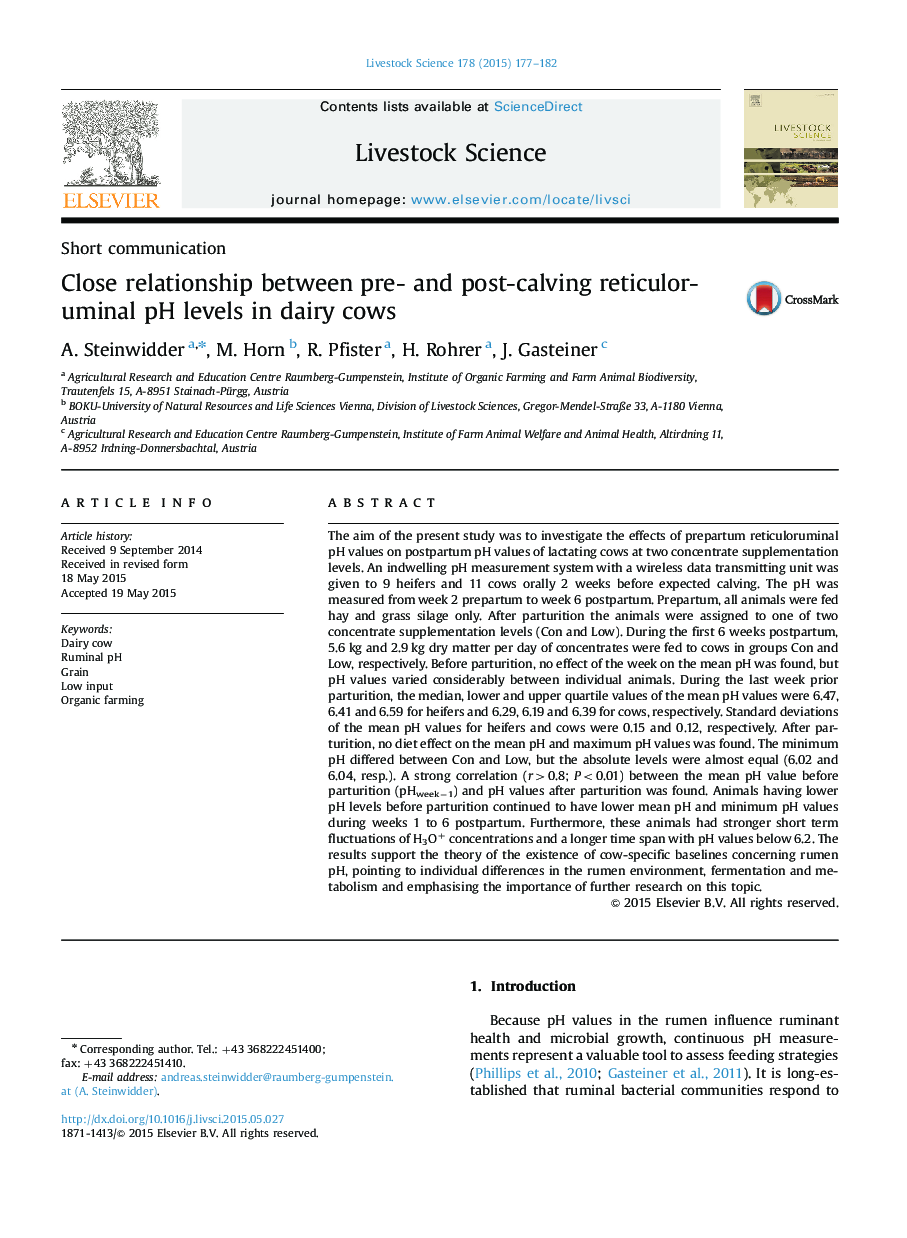| Article ID | Journal | Published Year | Pages | File Type |
|---|---|---|---|---|
| 2447074 | Livestock Science | 2015 | 6 Pages |
•Reticuloruminal pH was measured in 20 dairy cows during the transition period.•Effects of prepartum pH on postprtum pH at two concentrate levels were investiged.•Mean pH before parturition affected pH-levels after parturition.
The aim of the present study was to investigate the effects of prepartum reticuloruminal pH values on postpartum pH values of lactating cows at two concentrate supplementation levels. An indwelling pH measurement system with a wireless data transmitting unit was given to 9 heifers and 11 cows orally 2 weeks before expected calving. The pH was measured from week 2 prepartum to week 6 postpartum. Prepartum, all animals were fed hay and grass silage only. After parturition the animals were assigned to one of two concentrate supplementation levels (Con and Low). During the first 6 weeks postpartum, 5.6 kg and 2.9 kg dry matter per day of concentrates were fed to cows in groups Con and Low, respectively. Before parturition, no effect of the week on the mean pH was found, but pH values varied considerably between individual animals. During the last week prior parturition, the median, lower and upper quartile values of the mean pH values were 6.47, 6.41 and 6.59 for heifers and 6.29, 6.19 and 6.39 for cows, respectively. Standard deviations of the mean pH values for heifers and cows were 0.15 and 0.12, respectively. After parturition, no diet effect on the mean pH and maximum pH values was found. The minimum pH differed between Con and Low, but the absolute levels were almost equal (6.02 and 6.04, resp.). A strong correlation (r>0.8; P<0.01) between the mean pH value before parturition (pHweek−1) and pH values after parturition was found. Animals having lower pH levels before parturition continued to have lower mean pH and minimum pH values during weeks 1 to 6 postpartum. Furthermore, these animals had stronger short term fluctuations of H3O+ concentrations and a longer time span with pH values below 6.2. The results support the theory of the existence of cow-specific baselines concerning rumen pH, pointing to individual differences in the rumen environment, fermentation and metabolism and emphasising the importance of further research on this topic.
